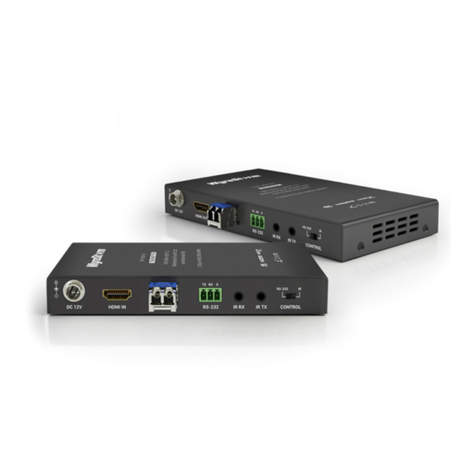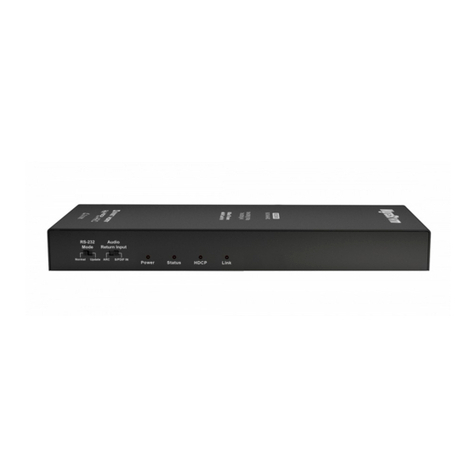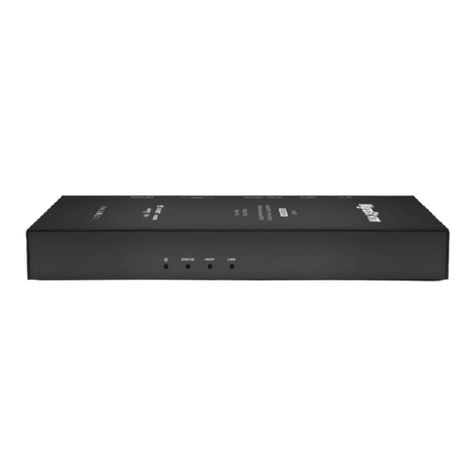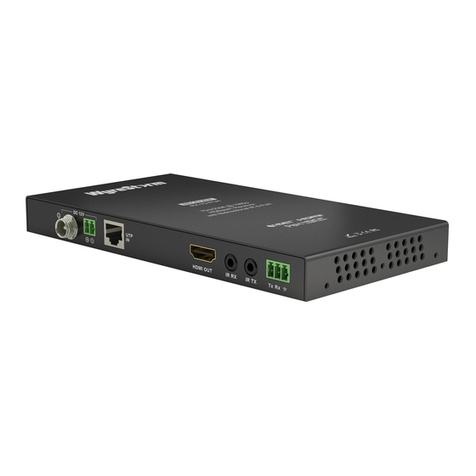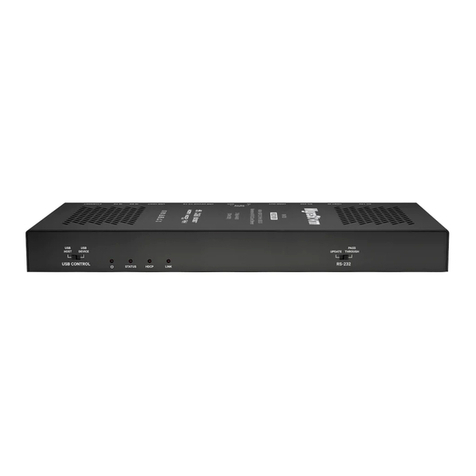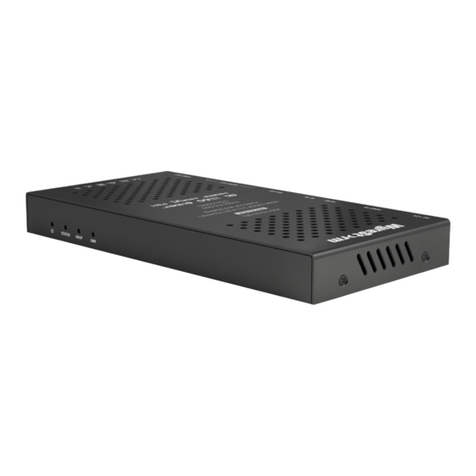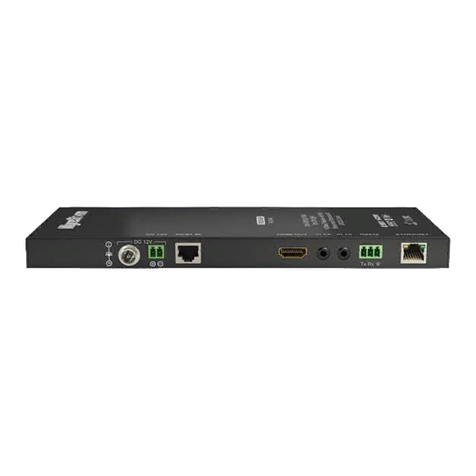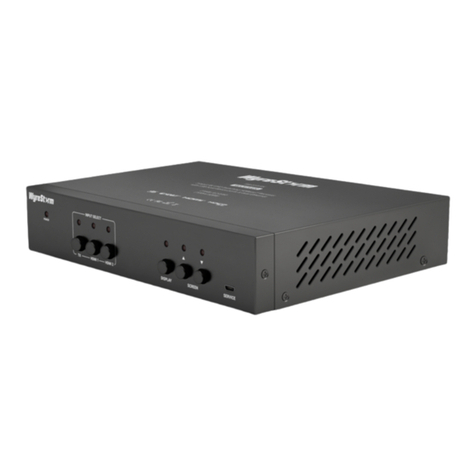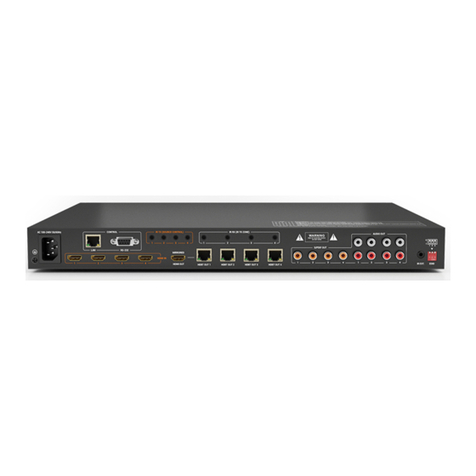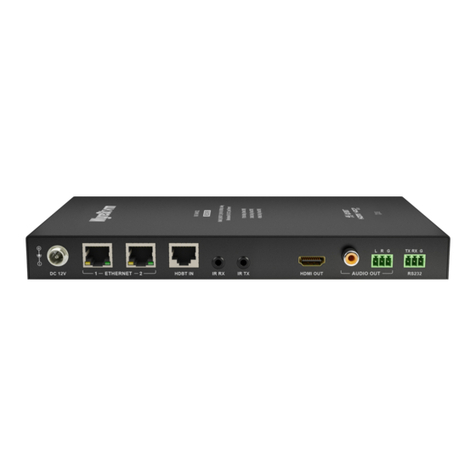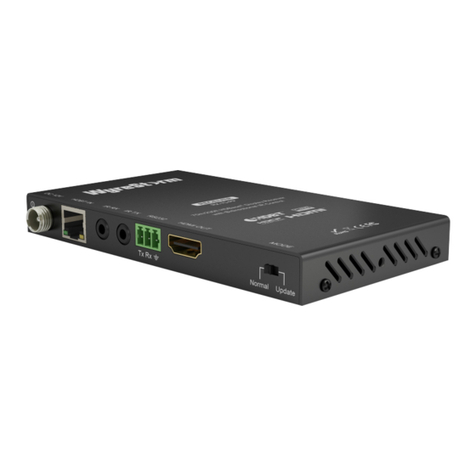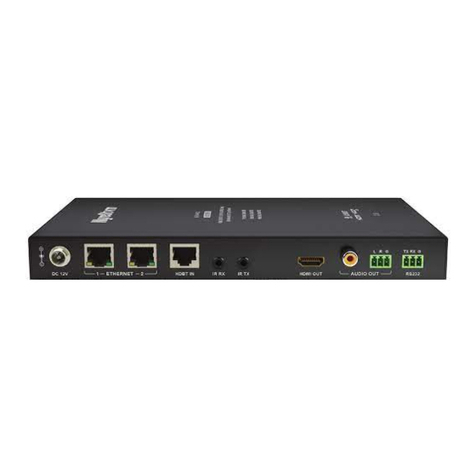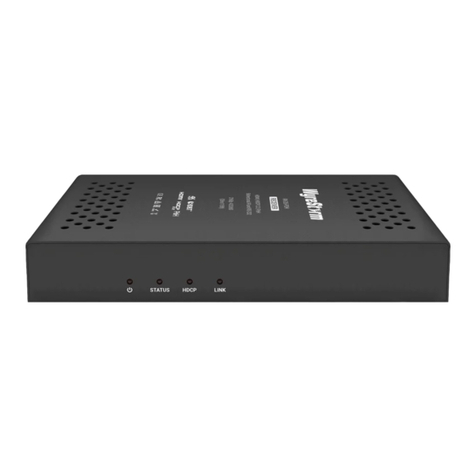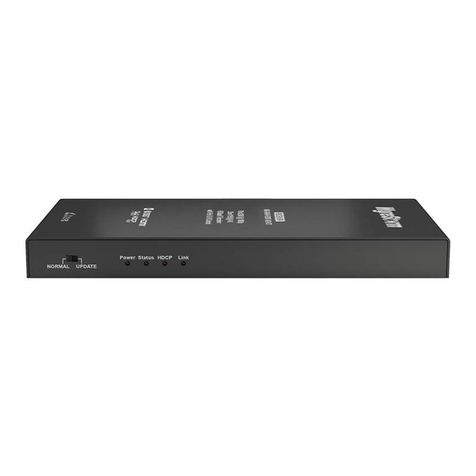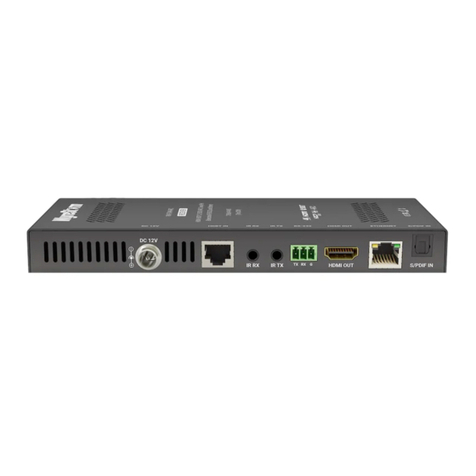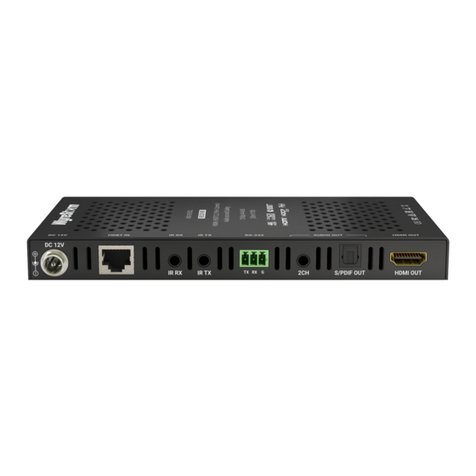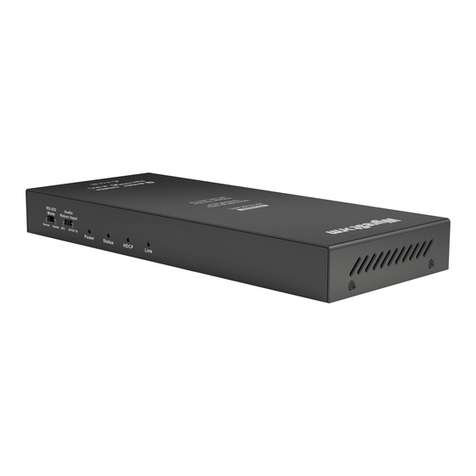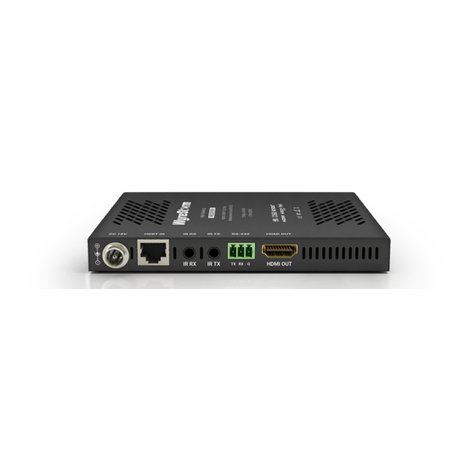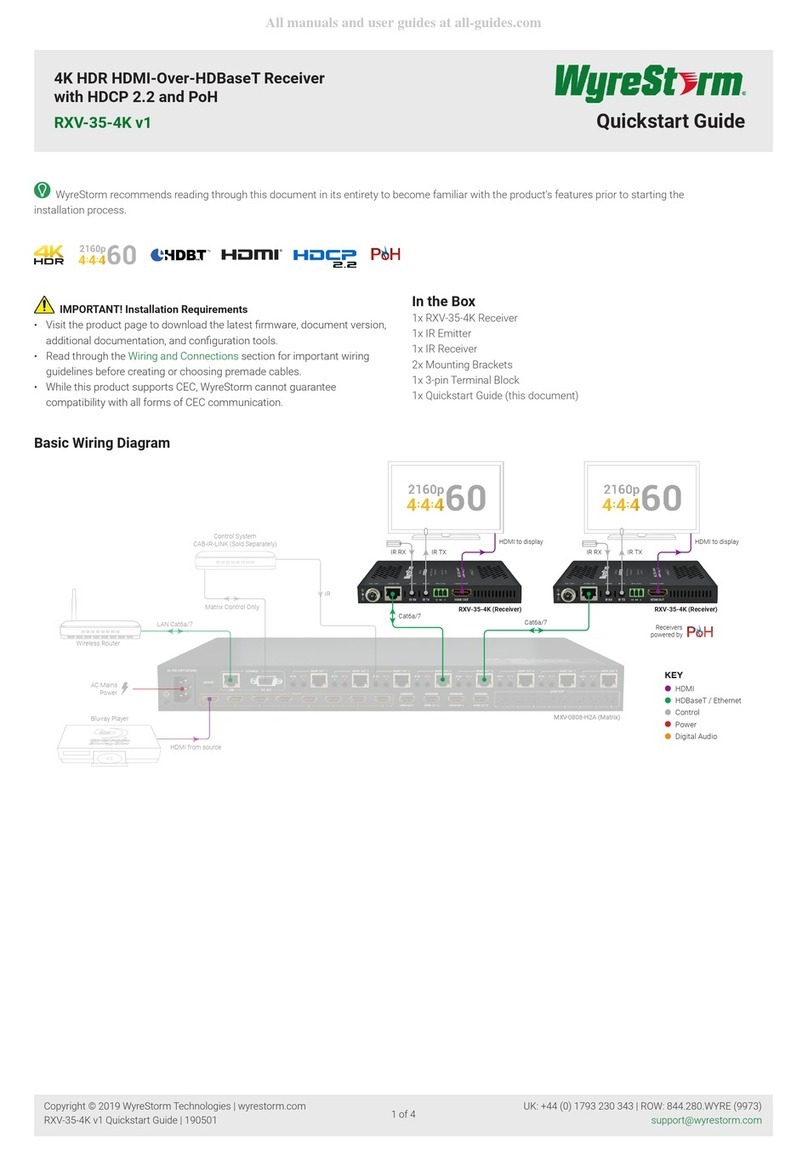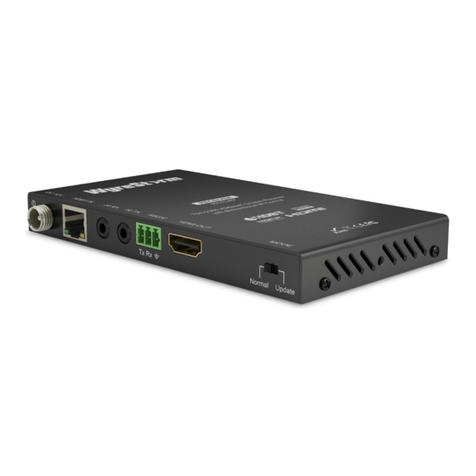TROUBLESHOOTING
9) Cable wired to 568B standard? Is the cable wired
and terminated correctly and are those terminations
connected to the correct ports? Incorrect wiring and
termination will result in unstable operation or a blank
screen.
10) Electrical interference – HDBaseT is less
susceptible to interference compared to regular
transmissions but the location of cables and devices
should be considered - could any form of interference
be generated? If so, attempt to remove the source of
electrical interference or move the cable run to decrease
the effects of the interference.
11) Is a picture achieved when connecting the
source directly to the display? If not then the problem
could lie with the input or output device rather than the
means of distribution i.e. the display rather than cable,
transmission device or receiver itself.
12) HDMI lead condition and quality – HDMI cables
and connectors are delicate and can be damaged much
easier than component or coax cable. Furthermore,
lead quality varies dramatically, particularly in lower price
brackets. Swap HDMI leads and check operation –
damage to or quality of your leads could be the problem.
If in doubt, swap them over. Always take care inserting
and extracting your HDMI from matrix ports so as not to
damage the connectors or ports.
13) Picture speckles/HD ‘noise’ – represents a poorly
established signal that may be caused by poor quality or
excessive HDMI cable lengths. Try swapping the display
adaptors from a location that is functioning properly or
swapping the outputs of the matrix switch used.
If the problem remains on the same screen this may be
caused by a connection problem between matrix and
display – turn off all equipment and swap the signal
carrying cables at both ends to ascertain if the cable or
termination is at fault.
HD Noise (NO image) may be an HDCP Issue between
the source and display but poor cabling can also cause
this due to poor communication.
14) Blu-ray: 3D – is the equipment used 3D enabled/
compatible? Is a 3D disc being played in a 3D enabled
Blu-ray player or through a compatible AV receiver?
15) 4K - Are you trying to pass a 4K signal? Ensure
connected devices are 4K enabled, correctly configured
and outputting compatible transmissions.
4K resolution - ensure all connected devices are
compatible with the UHD or DCI resolutions being
transmitted. See Specification section for more details
1080p - 1920x1080p, 60Hz (if problems are experienced
at 60Hz, try lowering to 50Hz)
Combined 4K / HD distributions - a WyreStorm EXP-SCL-
DAC-4K scaler may be required between receiver and
display to scale down 4K transmissions to 1080p 24fps
for HD screens and upscale 1080p to 4K 30Hz for UHD
displays
16) Colour distortion – a pink or green screen indicates
an incompatibility between colour spacing formats – the
commonly used RGB or YUV used by older displays.
Some sources allow switching between RGB and YUV
which may solve any colour problems. If not, try changing
the HDMI cable between the source and the matrix to rule
out defective cabling.
No Sound or Poor Quality Audio
Audio is transmitted within the video signal – there is no
separate audio track – so generally a problem with sound
will be accompanied by a problem with picture. However,
if technical issues with audio are experienced, the cause
is typically communication between sources, displays
and/or AV receiver settings.
1) Have specific speaker sets or zones been
enabled? Some AV receivers allow individual speaker
selections assigned to specific zones in the set up so
check the speakers used are fully connected to the
amplifier and correctly assigned within the system set up.
It may be an EDID issue in that the source reads the audio
EDID from the display and only requests two channel
audio and EDID copy from the AVR may be required or
use an embedded EDID in the MX-PP-4K matrix or EX-
70-4K Transmitter.
Note: If problems are experienced when an AV receiver is
used, the cause is usually the settings of the AVR itself.
Refer to the AVR manufacturer’s guidelines on the correct
settings to use for your requirements.
2) Consistency of audio output between devices – Is
there any discrepancy between the audio output of the
source, the audio or zonal settings of the AV receiver and
the speaker configuration used needed for successful
audio replication? If outputting 7.1, make sure all devices
connected are also outputting 7.1
Note: Occasionally with some sources, the device settings
